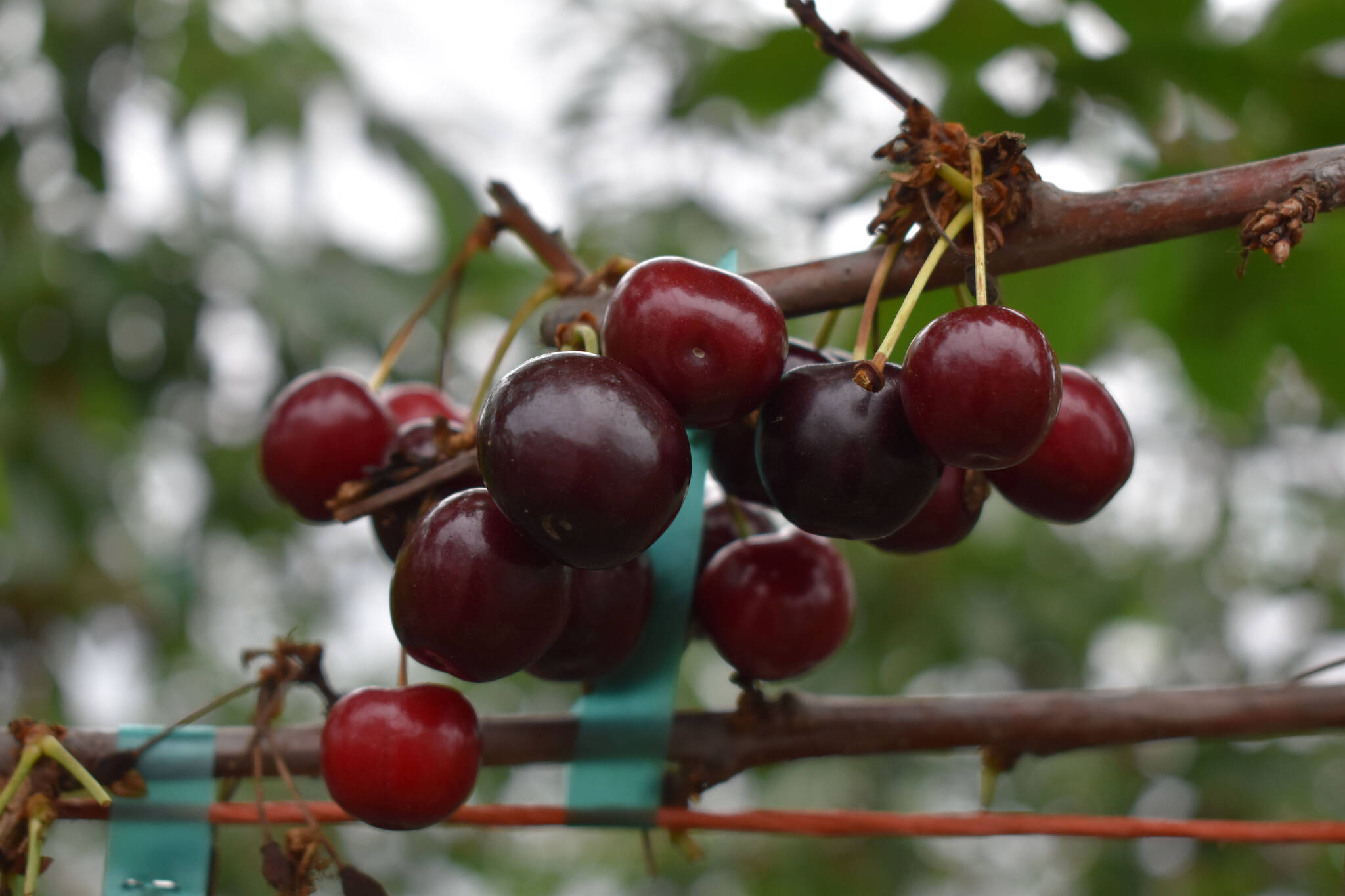Fruits and vegetables are being sold by the pound at O’Brien Garden & Trees in Nikiski, but the founder and owner of the farm says it’s the science that matters.
Right now, cherries, raspberries, strawberries, currants, snap peas, cucumber, broccoli, kale, cabbage, cauliflower and more are all available for “Upick” sale. Peaches, plums and apples can also be purchased.
“UPick” means you pick, with boxes and scissors available for guests to go harvest their own fruits and veggies.
Mike O’Brien, who founded and owns the farm, said he’s been selling his produce since the 1970s. He also said he’s constantly shifting what’s on offer as he experiments with what can and can’t be grown in the region.
“My children sometimes kind of get frustrated with their old dad,” he said.
O’Brien said he’s constantly looking to experiment with different varieties of fruits and vegetables.
“It’s very interesting to put kind of a little surprise element in there, just, ‘What is that madman doing now?’” he said.
If something works, O’Brien wants to share that information with other people, but he doesn’t want to waste time doing it again.
“This isn’t a farm to make money,” he said. “This is a farm to learn stuff.”
O’Brien said that the breadth of crops he grows is only possible because of the high tunnel structures that hold the cherries, apples, plums and peaches around the farm. He said the first high tunnels on his farm were built with money from the Natural Resources Conservation Service, and they totally changed what he could do.
Using the high tunnels, crops can be arranged into rows, separated into quarters, and protected from the elements. O’Brien said that, without high tunnels, the producing season would be about May to September.
He said that in March, he can come in a high tunnel on a sunny day and find temperatures of 50 or 60 degrees. That allows the season to stretch all the way from March to October.
“For Alaskans, I mean, we just jumped two time zones there,” O’Brien said. “There is almost no limit in my mind at what you can do.”
O’Brien said that despite the cold, and in part because of it, Alaska is uniquely capable of growing great produce.
“We don’t need to spray anything on the trees,” he said.
If bugs are seen, they can simply wash the bugs away with water.
“Cooler temperatures bring out the best taste in fruit,” O’Brien said.
He uses the time and the conditions of the high tunnels to figure out what varieties work best. This year, they planted 40 varieties of sweet cherries.
All of those varieties worked out, and now there’s an abundance of cherries being offered, but already the staff at O’Brien’s have identified and grafted the best tasting and best growing varieties for further growing next year.
Experimenting can be risky, and sometimes things don’t work.
“Some things hit and some do not. When they do not it’s a major problem and we’ll remember it for a long time because we did it at such a volume that it was costly and very time consuming,” O’Brien said.
Now, O’Brien encourages everyone to build their own high tunnels. His kids have them at their own homes. He says he works to help interested families learn what they need to do to start growing their own food.
“I would love to see high tunnels everywhere, in everyone’s yard. I’m not trying to limit the amount of my knowledge, I want to expand it,” he said.
That’s the biggest value of the “Upick” program at the farm to O’Brien.
“We just love not only doing it ourselves but also teaching others,” he said. “There’s no better way for people to truly enjoy the taste of it than when you take and pick it yourself.”
“Upick,” especially, brings out families and kids. O’Brien said he sees the families come and pick fruit together, then wonder if they could grow the fruits and vegetables themselves.
“People can see that it can be done in Nikiski, Alaska. If it’s Nikiski, it’s the whole peninsula, then it’s the whole state,” he said.
O’Brien gets a particular kick out of young people taking an interest.
“You want to see the young people take interest in something that’s positive, that’s going to benefit not only them but others too,” he said.
O’Brien told a story about two ladies who came out this week, and he overheard them chatting and laughing while they picked fruit.
“They were having a wonderful time,” he said. “If this farm can make a great time for people, that’s what it’s all about.”
Information about produce availability and “Upick” times can be found on the O’Brien Garden & Trees Facebook page.
Reach reporter Jake Dye at jacob.dye@peninsulaclarion.com


